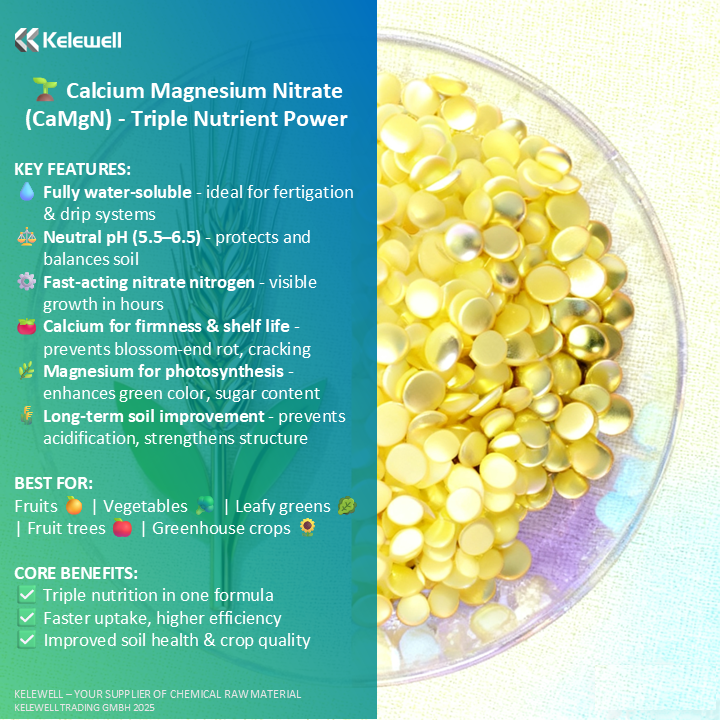Triacontanol - From Beeswax to Biotechnology: The Science of Natural Growth Stimulation
- Camille W.

- 8 hours ago
- 4 min read
Triacontanol is a long-chain primary alcohol composed of thirty carbon atoms (a straight-chain saturated fatty alcohol). It is a natural long-chain plant growth regulator, widely found in the epicuticular waxes of plants (plant waxes such as rice bran wax) and the exoskeleton waxes of insects (insect waxes such as beeswax). Because it was first purified from beeswax, it is also called beeswax alcohol. At room temperature, triacontanol is a solid that is colorless or slightly yellow. It is insoluble in water but readily soluble in organic solvents.
In 1933, Chibnall and colleagues first isolated triacontanol from alfalfa and identified it as the main component of alfalfa leaf wax. In 1975, Riece discovered that when alfalfa was used as an organic fertilizer, the yield increase was more significant than when using the same amount of nitrogen fertilizer. Further analysis led to the isolation of a highly active crystalline substance from alfalfa, which mass spectrometry confirmed to be triacontanol.
By the 1970s and 1980s, triacontanol was already widely used in agriculture in developed countries. In recent years, research has shown that triacontanol exhibits strong physiological activity, can increase crop yields, and is highly effective even at low doses. It is non-toxic, harmless, and natural, making it an ideal plant bioactive substance.
Basic Information
Functions and Effects
Triacontanol is a broad-spectrum plant growth regulator that is natural, non-toxic, and efficient. It is absorbed through the stems and leaves and promotes plant growth.At low concentrations, it stimulates growth; at high concentrations, it may inhibit it.
It enhances the activity of enzymes such as peroxidase, amylase, and nitrate reductase, promotes carbon and nitrogen metabolism, and increases the accumulation of dry matter, thus improving yields.It also promotes the absorption of water and mineral nutrients, significantly increases chlorophyll content and net photosynthetic rate, and regulates the transport, distribution, and accumulation of photosynthetic products.This facilitates the movement of assimilates toward seeds and fruits, accelerates the translocation of stored organic substances from stems to grains, and enhances the plant’s uptake of water and nutrients.
Triacontanol promotes cell division, increases fresh cell weight, and boosts the activity of enzymes such as starch phosphorylase, polyphenol oxidase, and phosphoenolpyruvate carboxylase. It promotes photosynthesis, enhances rooting, germination, flowering, and early maturity, and increases chlorophyll content and photosynthetic efficiency.Applied during early growth stages, it improves germination rate, seedling vigor, and tillering; during mid-to-late growth stages, it increases flower buds, fruit set, and grain weight.
It is widely used in crops such as rice, wheat, cotton, soybean, corn, sorghum, sugarcane, tobacco, beet, peanut, fruit trees, vegetables, flowers, and seaweed, leading to substantial yield improvements. It is a pollution-free plant growth regulator.
Application Methods
Seed Soaking
Soak seeds for 1–2 days in a 1:1000 solution of 0.1% triacontanol microemulsion before germination.
For dryland crops, soak for 12–24 hours before sowing.
Promotes seed vigor and enhances germination.
Foliar Spray
Spray crops at the early flowering and full bloom stages using a 1:2000 solution of 0.1% triacontanol microemulsion.
Promotes flower bud formation, pollination, and fruit set.
Seedling Soaking (Aquatic Crops)
For seedlings of seaweed or laver, immerse in a 1:7000 solution of 1.4% triacontanol for 2 hours.
Encourages early differentiation, robust growth, and increased yield.
Application Timing
Apply on clear, calm afternoons for better absorption, as stomata are more open and conducive to uptake.
Compatibility
Can be mixed with fertilizers or other plant growth regulators to improve efficacy.
Avoid mixing with morpholine compounds, which inhibit triacontanol activity.
Recommended Application TablePrecautions
Prepare solution accurately — excessive concentration may inhibit growth.
Avoid mixing with morpholine compounds.
Prepare and use fresh solutions only.
Do not mix with acidic pesticides or foliar fertilizers, as they neutralize triacontanol.
If rain occurs within 4–6 hours after spraying, reapply.
Summary
Triacontanol is a natural, non-toxic, and highly efficient plant growth regulator widely found in plant and insect waxes. Even trace amounts can produce significant physiological effects by enhancing enzyme activity, promoting nitrogen metabolism, increasing chlorophyll content, and boosting photosynthesis.
Since its discovery and experimental validation in 1975, triacontanol has been extensively used in crop yield enhancement, flower cultivation, and mushroom production, delivering remarkable agricultural results.




Comments